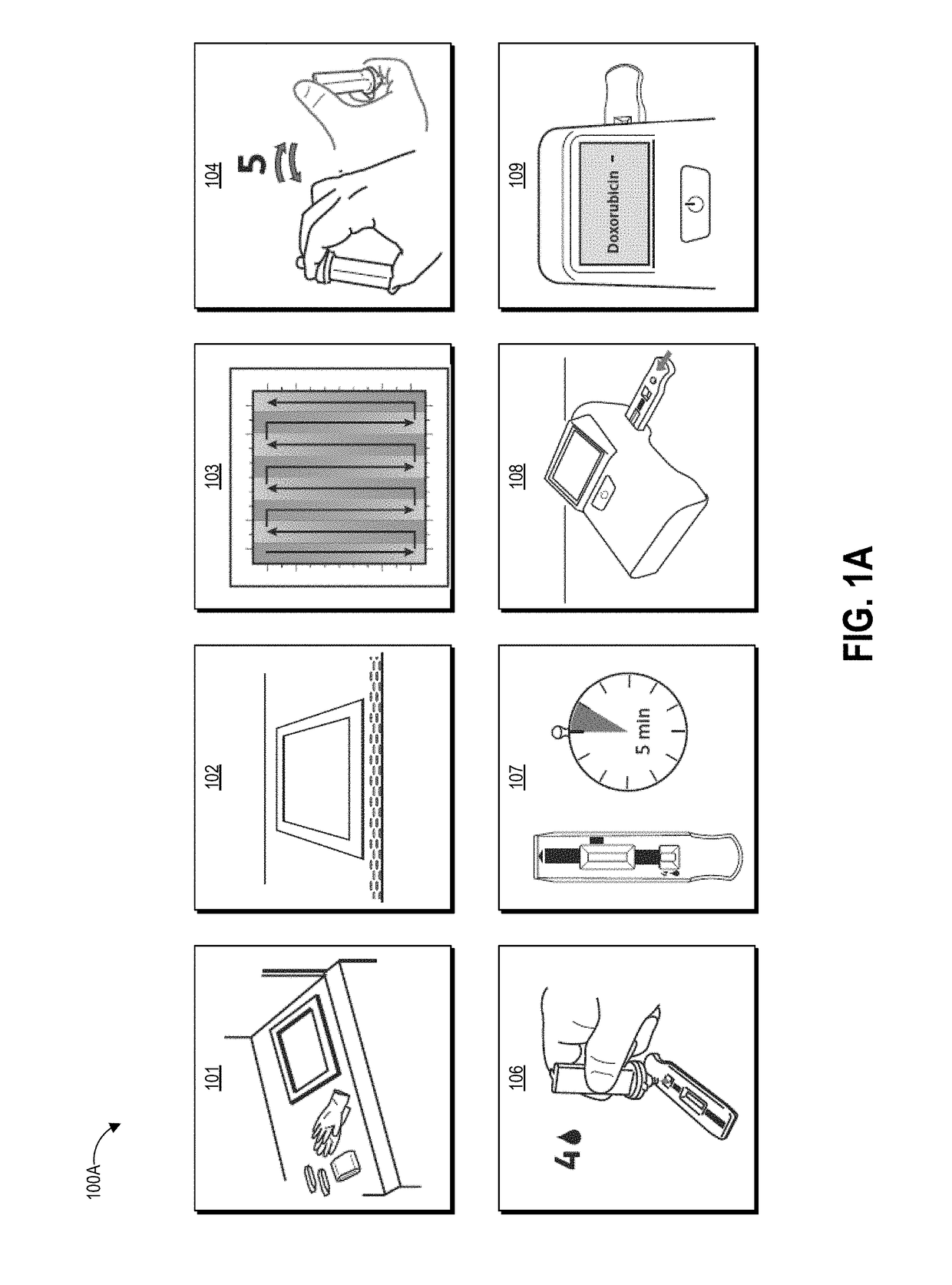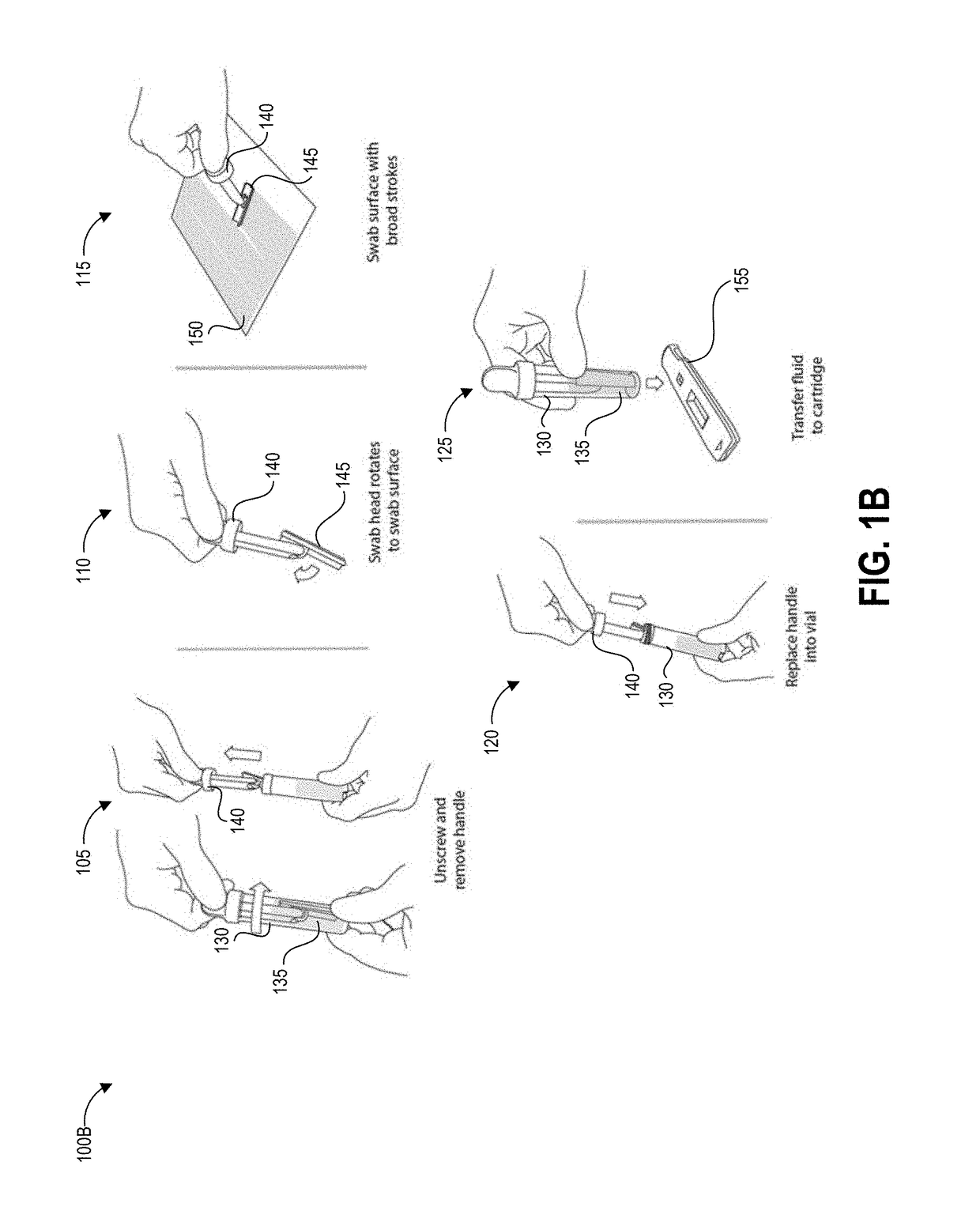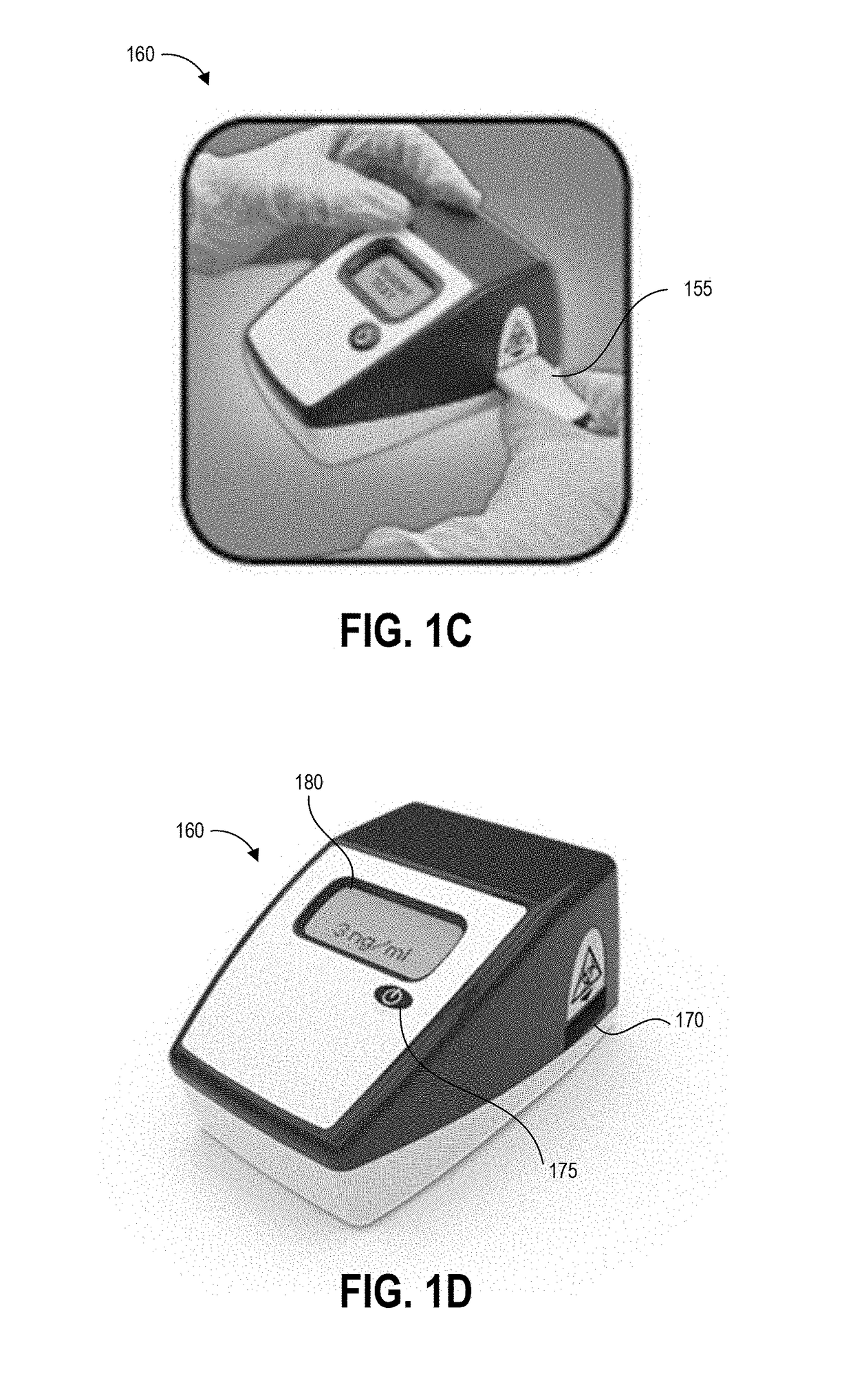Augmented reality devices for hazardous contaminant testing
a technology of augmented reality and hazardous contaminant, which is applied in the direction of optical elements, mechanical pattern conversion, instruments, etc., can solve the problems of no safe level of exposure, no therapeutic benefit, and even very small concentrations of antineoplastic drugs, so as to increase the risk of exposure of test operators, increase the amount of time required to test, and improve the accuracy of measurement of sampled area.
- Summary
- Abstract
- Description
- Claims
- Application Information
AI Technical Summary
Benefits of technology
Problems solved by technology
Method used
Image
Examples
example sampling
Overview of Example Sampling Method
[0038]FIGS. 1A-1D graphically illustrate steps of an example method of collecting and testing a liquid sample as described herein. FIG. 1A illustrates example steps of a testing method 100A for testing for the presence of an analyte on a test surface. One, some, or all of the depicted blocks of FIG. 3A can be printed as graphical user interface instructions on the packaging of an assay and / or collection kit, or can be presented on a display screen of an assay reader device, a test area terminal, or a personal computing device of the user.
[0039]At block 101, the user can identify a sample location and gather a collection kit, assay cartridges, and a template. The collection kit can include a swab attached to a handle and a collection container. In some examples, the swab is pre-wetted with buffer solution and packaged together with the handle in a first sealed pouch and the collection container is packaged in a second sealed pouch. The assay cartrid...
PUM
 Login to View More
Login to View More Abstract
Description
Claims
Application Information
 Login to View More
Login to View More - R&D
- Intellectual Property
- Life Sciences
- Materials
- Tech Scout
- Unparalleled Data Quality
- Higher Quality Content
- 60% Fewer Hallucinations
Browse by: Latest US Patents, China's latest patents, Technical Efficacy Thesaurus, Application Domain, Technology Topic, Popular Technical Reports.
© 2025 PatSnap. All rights reserved.Legal|Privacy policy|Modern Slavery Act Transparency Statement|Sitemap|About US| Contact US: help@patsnap.com



